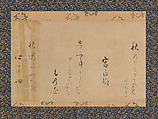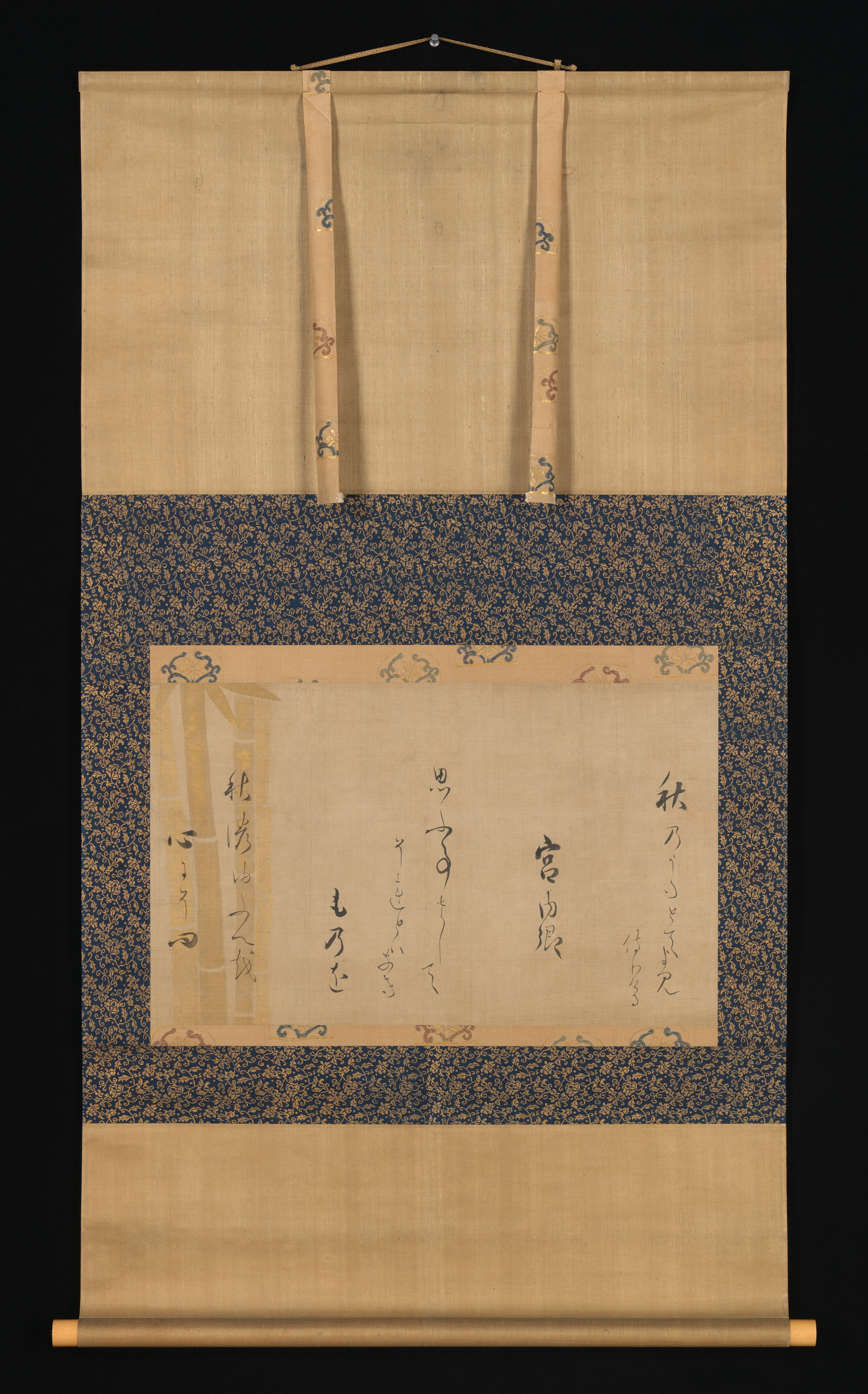Autumn Poem by Lady Kunaikyō
Calligraphy by Hon'ami Kōetsu Japanese
Underpainting attributed to Tawaraya Sōtatsu Japanese
Not on view
Hon’ami Kōetsu was the most prominent calligrapher of his generation, and renowned for his renditions of classical Japanese waka (court poems in 31 syllables) in a mixture of dynamically rendered kanji (Chinese characters and kana (Japanese phonetic characters). He employed an age-old technique of “scattered writing” (chirashigaki) whereby the lengths of columns were adjusted to create an attractive composition. It was comparatively rare for Kōetsu to brush poem scrolls on silk, though this work bears comparison to a section of silk handscroll with poems in the collection of the Asia Society New York. That handscroll also has painted gold bamboo decoration, and is also attributed to Tawaraya Sōtatsu, head of a studio of artists who created fan paintings, screens, and paper decoration inspired by classical painting themes. )
The poem transcribed here is one by Lady Kunaikyō (died ca. 1204), daughter of an emperor, who was considered one of the great poets of early medieval times. Included in the imperially commissioned anthology Shin kokin wakashū (New Anthology of Poems Ancient and Modern), her poem reflects on the mood sad reflection that the end of an autumn day brings on.
Transcription of text:
宮内卿
秋の歌とてよみ侍りける.
思ふ事さしてそれとはなきものを秋のゆふべを心にぞ問(新古365).
Kunaikyō
Aki no uta tote yomi-haberi keru
Omou koto
sashite sore to wa
naki mono o
aki no yūbe o
kokoro ni zo tou
Composed as a poem on the topic of autumn:
It’s not that I’m now
lost in thought,
but dusk in autumn
makes me ponder
on matters of the heart.
Due to rights restrictions, this image cannot be enlarged, viewed at full screen, or downloaded.
This artwork is meant to be viewed from right to left. Scroll left to view more.



